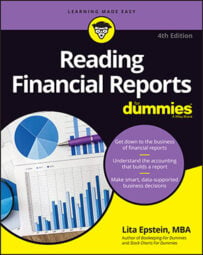You can judge how well a company uses its assets by using financial reports to calculate the return on assets (ROA). If the ROA is a high percentage, the company is likely managing its assets well. As an investor, that consideration is important because your shares of stock represent a claim on those assets.
You want to be sure that the company is using your claim wisely. If you haven't invested yet, be sure your investment will go toward stock in a company that invests its assets well. As with all ratios, you need to compare results with those of similar companies in an industry for the numbers to mean anything.
To calculate ROA, divide net income by total assets. You can find net income at the bottom of the income statement, and you can find total assets at the bottom of the assets section of the balance sheet.
Net income ÷ Total assets = Return on assets
How to divide to get ROA
Using the numbers from Mattel's income statement and balance sheet, you can determine its ROA:
$776,464,000 (Net income) ÷ $6,526,785(Total assets) = 11.9% (ROA)
So Mattel made 11.9 percent on each dollar of assets. Compare this number with Hasbro's ROA:
$335,999,000 (Net income) ÷ $4,325,387 (Total assets) = 7.8% (ROA)
Hasbro made 7.8 percent on each dollar of assets. Mattel earned about 4 percent more than Hasbro on each dollar of assets.
How to rank companies with the help of ROA
The ROA ratio shows you how much a company earns from its assets or capital invested. This ratio gives investors and debtors a clear view of how well a company's management uses its assets to generate a profit.
Both shareholders’ equity (claims on assets by shareholders) and debt funding (claims on assets by creditors) factor into this calculation, meaning that the ratio looks at the income generated using money raised by borrowing funds from creditors and selling stock to shareholders.
ROA can vary significantly, depending on the type of industry. Companies that must use their capital to maintain manufacturing operations with factories and expensive machinery have a much lower ROA than companies that don't require heavy manufacturing, like service companies. Businesses with low asset requirements average an ROA of 20 percent or higher, whereas companies that require a large investment in assets can have ROAs below 5 percent.

